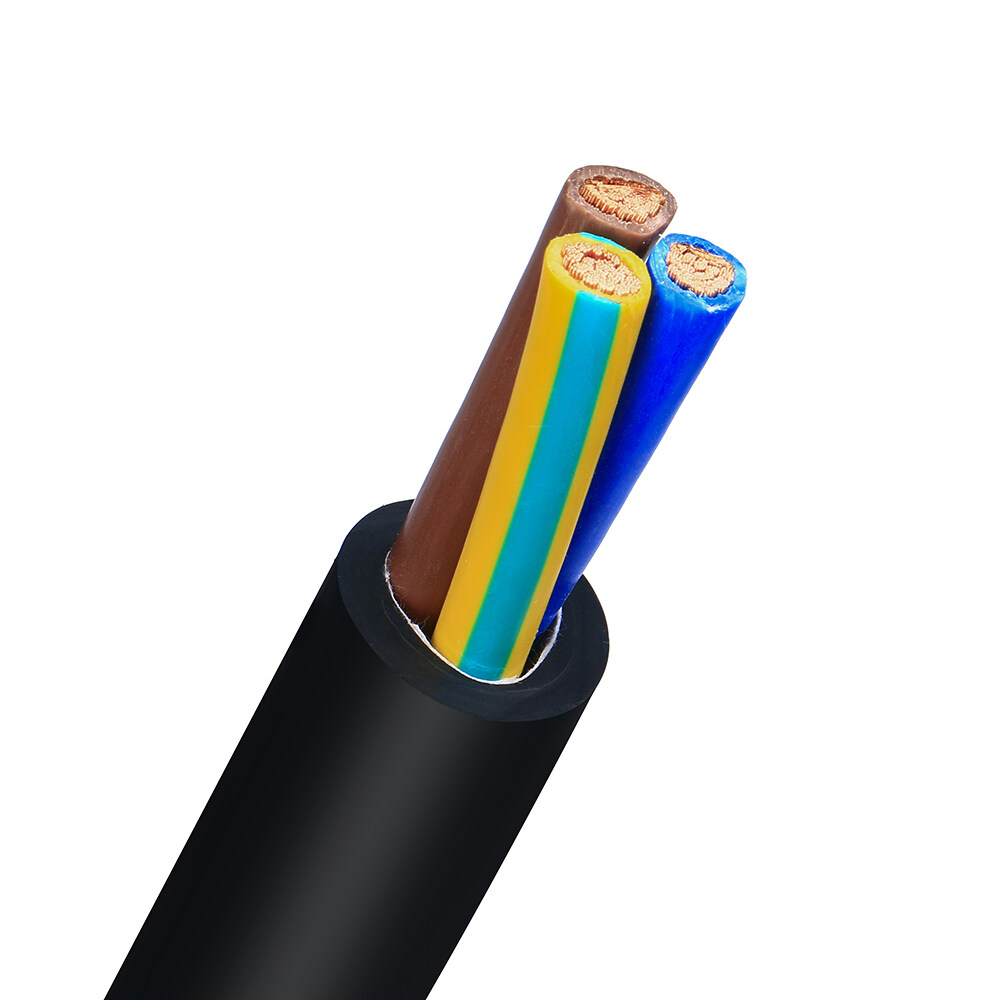Email format error
Email cannot be empty
Email already exists
6-20 characters(letters plus numbers only)
The password is inconsistent
Email format error
Email cannot be empty
Email does not exist
6-20 characters(letters plus numbers only)
The password is inconsistent

News at Linke
News from National Cable And Wire Manufacturing Company.

Maximizing Performance: Custom Composite Power Cables Unveiled
Introduction
Custom composite power cables represent the pinnacle of modern engineering, offering tailored solutions to diverse power transmission challenges. At the heart of these cables lies meticulous attention to materials, design, and manufacturing processes. In this article, we delve deep into the realm of custom composite power cables, exploring the key components and materials, design considerations, advantages over standard cables, and a comparative analysis with other manufacturing models.
Key Components and Materials in Custom Composite Power Cables
Custom composite power cables are meticulously engineered assemblies comprised of several key components, each playing a crucial role in ensuring optimal performance and reliability. Understanding these components and the materials from which they are constructed is fundamental to appreciating the complexity and versatility of custom composite power cables.
1. Conductors:
At the core of every power cable lies the conductor, tasked with the transmission of electrical signals from one point to another. Custom composite power cables commonly employ conductors made from high-quality materials such as copper or aluminum due to their excellent conductivity properties. The choice between copper and aluminum conductors depends on factors such as cost, weight, and application-specific requirements.
Copper conductors, renowned for their superior conductivity and flexibility, are often preferred for applications where signal integrity and efficiency are paramount. Aluminum conductors, on the other hand, offer a more cost-effective solution for applications with less stringent performance requirements. Both materials undergo rigorous testing and quality control measures to ensure compliance with industry standards and specifications.
2. Insulation Materials:
Surrounding the conductor is the insulation layer, designed to safeguard against electrical hazards and prevent signal leakage. Custom composite power cables utilize a variety of insulation materials, each offering unique properties tailored to specific application needs. Common insulation materials include polyvinyl chloride (PVC), cross-linked polyethylene (XLPE), and ethylene propylene rubber (EPR).
PVC insulation, known for its affordability and versatility, is widely used in indoor and low-voltage applications. XLPE insulation, prized for its exceptional thermal and mechanical properties, is favored for high-voltage and outdoor applications where reliability and durability are paramount. EPR insulation, valued for its resilience to environmental stress and aging, finds applications in medium-voltage power distribution systems.
3. Shielding Materials:
In environments prone to electromagnetic interference (EMI) and radiofrequency interference (RFI), shielding materials play a crucial role in preserving signal integrity and minimizing disruptions. Custom composite power cables employ various shielding techniques, including metallic foils, braided wires, and conductive tapes, to attenuate unwanted electromagnetic fields.
Metallic foils, typically made of aluminum or copper, provide a barrier against external interference by reflecting and absorbing electromagnetic radiation. Braided wires, woven from fine strands of conductive material, offer enhanced flexibility and coverage, making them ideal for applications requiring robust shielding. Conductive tapes, consisting of conductive polymers or metals, provide an additional layer of protection against EMI and RFI while maintaining flexibility and ease of installation.
4. Jacketing Materials:
Encasing the cable assembly is the jacketing material, responsible for providing mechanical protection and resistance to environmental factors such as moisture, heat, and abrasion. Custom composite power cables employ a diverse range of jacketing materials, including thermoplastic elastomers (TPE), chlorinated polyethylene (CPE), and polyethylene (PE).
TPE jackets, prized for their flexibility, resilience, and environmental friendliness, are commonly used in applications requiring superior weather resistance and UV stability. CPE jackets, known for their exceptional oil and chemical resistance, find applications in harsh industrial environments where exposure to corrosive substances is a concern. PE jackets, valued for their cost-effectiveness and ease of processing, offer a versatile solution for a wide range of indoor and outdoor applications.
Design Considerations for Custom Composite Power Cables
Designing custom composite power cables requires careful consideration of various factors, including voltage requirements, environmental conditions, and load capacity. Voltage requirements dictate the cable's insulation thickness and dielectric strength to prevent electrical breakdown and ensure safety. Environmental conditions such as temperature extremes, moisture, and chemical exposure influence material selection and cable design to ensure optimal performance and longevity.
Customization options abound in the realm of custom composite power cables, allowing for tailored solutions to meet specific application needs. Size variations accommodate varying space constraints, while shape configurations cater to unique installation requirements. Additionally, custom composite power cables can be engineered with specialized features such as fire resistance, oil resistance, or rodent protection, further enhancing their suitability for specific environments and applications.
Compliance with industry standards and regulations is paramount in the design and manufacturing of custom composite power cables. Adherence to safety guidelines and regulatory requirements ensures that the cables meet stringent quality standards and provide reliable performance in diverse operating conditions.

Advantages of Custom Composite Power Cables
The adoption of custom composite power cables offers a plethora of advantages over standard cables. Firstly, custom composite power cables deliver improved performance characterized by enhanced conductivity, reduced signal loss, and minimized interference. By optimizing material selection and design, these cables can achieve superior electrical properties, resulting in more efficient power transmission and signal integrity.
Furthermore, custom composite power cables boast extended longevity and reliability, thanks to their robust construction and tailored design. Their durability in harsh environments, resistance to wear and tear, and superior mechanical properties translate to reduced maintenance costs and increased uptime, making them a cost-effective choice for long-term installations.
Comparison with Other Cable Manufacturing Models
Contrasting with other cable manufacturing models such as OEM (original equipment manufacturing) and OBM (original brand manufacturing), ODM (original design manufacturing) offers unparalleled flexibility and customization. Unlike OEM, which focuses on standardization and mass production, ODM allows for bespoke solutions tailored to individual customer requirements. Similarly, OBM prioritizes brand control and marketing, whereas ODM prioritizes technical expertise and engineering excellence, resulting in superior performance and reliability.
The choice between different manufacturing models hinges on various factors, including client requirements, industry standards, and market demands. While OEM and OBM may suffice for generic applications, custom composite power cables manufactured through the ODM model offer unmatched versatility and performance for specialized applications and demanding environments.
Conclusion
In conclusion, custom composite power cables represent the epitome of modern engineering, offering tailored solutions to diverse power transmission challenges. Meticulous attention to materials, design, and manufacturing processes ensures optimal performance, reliability, and longevity. By embracing custom composite power cables, industries can maximize efficiency, minimize downtime, and achieve unparalleled levels of performance and reliability in their power transmission systems.

